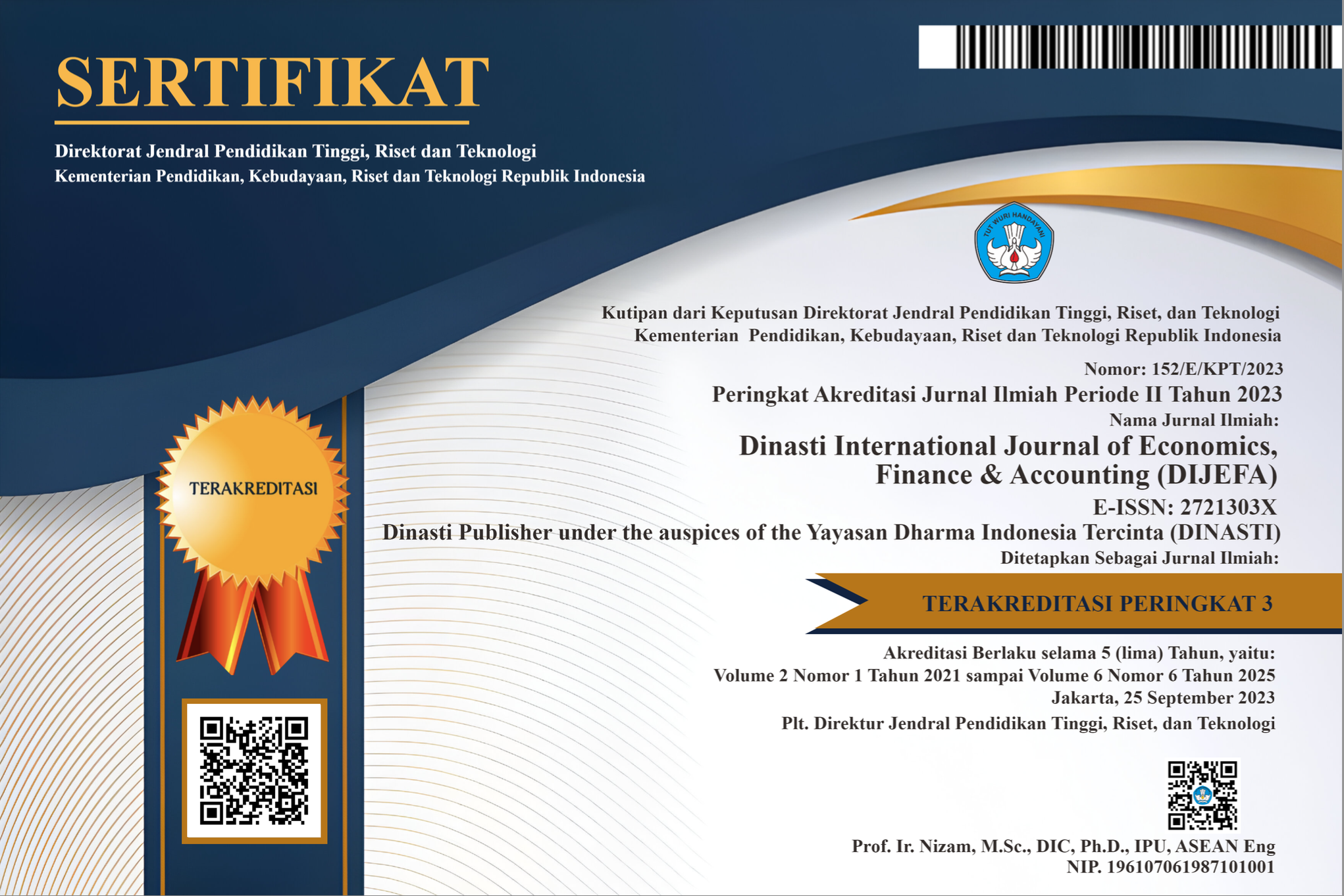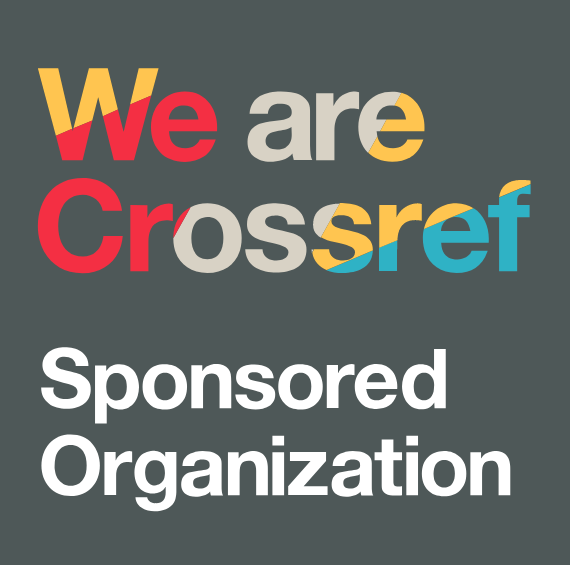Analysis of Financial Statement Fraud Using the Fraud Triangle Approach (Study on Transportation and Logistics Sector Companies Listed on the Indonesia Stock Exchange for the Period 2017-2023)
DOI:
https://doi.org/10.38035/dijefa.v5i5.3572Keywords:
Fraud Diamond Theory, Fraudulent Financial Statements, Manufacturing Companies in IndonesiaAbstract
This study aims to analyze the application of the Fraud Diamond Theory in detecting fraudulent financial statements in manufacturing companies in Indonesia. The Fraud Diamond Theory, which consists of four key elements—pressure, opportunity, rationalization, and capability—provides a comprehensive framework for understanding the factors that drive individuals to commit financial fraud. Using a sample of financial data from selected manufacturing firms, this research examines how these four elements contribute to fraudulent behavior and evaluates their effectiveness in identifying financial statement irregularities. The study utilizes quantitative methods, employing financial ratio analysis, statistical tests, and data on corporate governance to assess the likelihood of fraud within these companies. The results indicate that the elements of pressure and opportunity play a significant role in facilitating fraudulent activities, while rationalization and capability also contribute but are more difficult to quantify. The findings suggest that incorporating Fraud Diamond indicators into corporate governance and internal audit systems can enhance the early detection of financial fraud in manufacturing firms in Indonesia. This research contributes to the growing body of literature on fraud detection, offering insights for regulators, auditors, and corporate stakeholders to strengthen financial oversight and prevent financial misstatements.
References
Al Alyani, O., Al-Farsi, F., & Al-Saadi, T. (2023). Review of the prevalence of opioid use disorder following traumatic brain injury. World Neurosurgery, 177, 127–136.
Albrecht, S., Winn, J. N., Johnson, J. A., Howard, A. W., Marcy, G. W., Butler, R. P., Arriagada, P., Crane, J. D., Shectman, S. A., & Thompson, I. B. (2012). Obliquities of hot Jupiter host stars: Evidence for tidal interactions and primordial misalignments. The Astrophysical Journal, 757(1), 18.
Bagus, M., Rizal, N., & Lastianti, S. D. (2020). Determinant of Fraud Pentagon in Detecting Finance of Financial Statements. Assets: Jurnal Ilmiah Ilmu Akuntansi, Keuangan Dan Pajak, 4(1), 32–41.
Beasley, M. S. (1996). An empirical analysis of the relation between the board of director composition and financial statement fraud. Accounting Review, 71(4), 443–465.
Crowe, H. (2011). Putting the freud in fraud: Why the fraud triangle is no longer enough. IN Howart, Crowe.
Evana, E., Metalia, M., & Mirfazli, E. (2019). Business ethics in providing financial statements: The testing of fraud pentagon theory on the manufacturing sector in Indonesia. Business Ethics and Leadership, 3(3), 68–77.
Handoko, B. L., & Aurelia, E. (2022). Fraud hexagon analysis for detecting potential fraudulent financial reporting in manufacture sector. Proceedings of the 8th International Conference on Management of E-Commerce and e-Government, 60–67. https://doi.org/10.1145/3483816.3483829
Ikatan Akuntan Publik Indonesia. (2012). Standar Profesional Akuntan Publik. Https://Iapi.or.Id/. https://iapi.or.id/standar-profesional-akuntan-publik/
Indarto, S. L., & Ghozali, I. (2016). Fraud diamond: Detection analysis on the fraudulent financial reporting. Risk Governance & Control: Financial Markets & Institutions, 6(4).
Khoirunnisa, A., Rahmawaty, A., & Yasin, Y. (2020). Fraud Pentagon Theory dalam Mendeteksi Fraudulent Financial Reporting Pada Perusahaan yang Terdaftar di Jakarta Islamic Index 70 (JII 70) Tahun 2018. BISNIS: Jurnal Bisnis Dan Manajemen Islam, 8(1), 97–110.
Kuo, T. H., & Tien, H. K. (2022). Enhancing the effects of creativity training for business school students through art-based methods and blended learning. Education and Training, 64(5), 642–661. https://doi.org/10.1108/ET-07-2021-0282
Mardiana, M., & Purnamasari, P. E. (2018). The effect of risk management on financial performance with good corporate governance as a moderation variable. Management and Economics Journal (Mec-j), 2(3), 257–268.
Purwaningtyas, N. A., & Ayem, S. (2021). ANALISIS FRAUD PENTAGON DALAM MENDETEKSI KECURANGAN LAPORAN KEUANGAN: Studi Kasus pada Perusahaan Perbankan yang Terdaftar di BEI Periode Tahun 2014-2018. Kajian Bisnis Sekolah Tinggi Ilmu Ekonomi Widya Wiwaha, 29(1), 69–91.
Ramos, M. J., & West, L. (2003). Fraud detection in a GAAS audit: SAS no. 99 implementation guide.
Skousen, C. J., Smith, K. R., & Wright, C. J. (2009). Detecting and predicting financial statement fraud: The effectiveness of the fraud triangle and SAS No. 99. In Corporate governance and firm performance (pp. 53–81). Emerald Group Publishing Limited.
Widarti, H. R., Retnosari, R., & Marfu’ah, S. (2017). Misconception of pre-service chemistry teachers about the concept of resonances in organic chemistry course. AIP Conference Proceedings, 1868(1).
Wolfe, D. T., & Hermanson, D. R. (2004). The fraud diamond: Considering the four elements of fraud.
Downloads
Published
How to Cite
Issue
Section
License
Copyright (c) 2024 Pedi Kurnia, Rita Yuniarti

This work is licensed under a Creative Commons Attribution 4.0 International License.
Authors who publish their manuscripts in this journal agree to the following conditions:
- The copyright on each article belongs to the author(s).
- The author acknowledges that the Dinasti International Journal of Economics, Finance & Accounting (DIJEFA) has the right to be the first to publish with a Creative Commons Attribution 4.0 International license (Attribution 4.0 International (CC BY 4.0).
- Authors can submit articles separately, arrange for the non-exclusive distribution of manuscripts that have been published in this journal into other versions (e.g., sent to the author's institutional repository, publication into books, etc.), by acknowledging that the manuscript has been published for the first time in the Dinasti International Journal of Economics, Finance & Accounting (DIJEFA).


























































